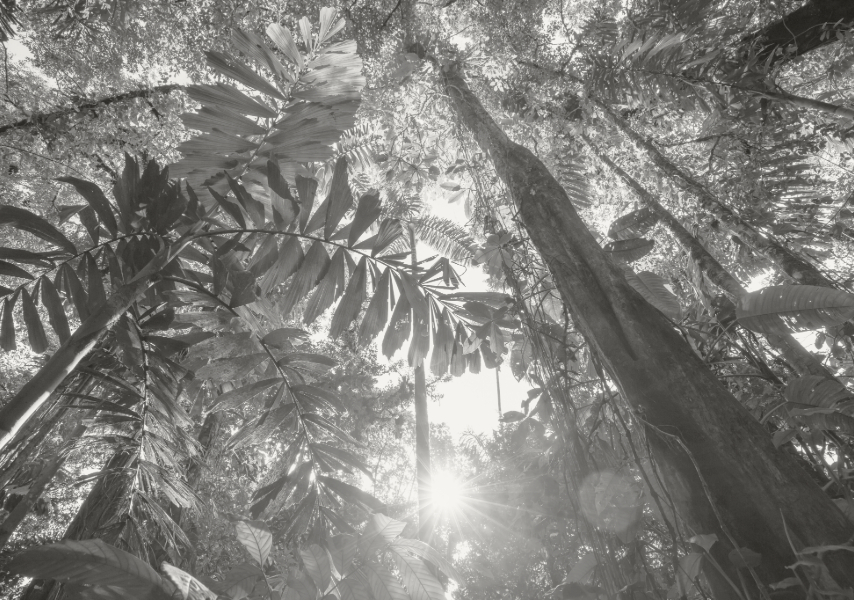Over the past few months, large corporations have defunded, reduced, or reshaped their DEI (Diversity, Equity and Inclusion) policies. Some examples include Amazon, Meta, McDonald’s, Walmart, Harley-Davidson , John Deere, Ford, and Toyota. They seem to be following pressure and boycotts from the public, supported by social media campaigns, as well as a change in the legal and political climate in the US. Just a few weeks ago, the new government of the United States cancelled any DEI “mandates, policies, programs, preferences, and activities in the Federal Government, under whatever name they appear”. There are plenty of articles analyzing different political and economic aspects around these changes. But I would like to invite you to explore diversity with a different lens – one that looks beyond human-made policies.
While human institutions continually shift their approaches to diversity, nature has been evolving its own complex systems. Let’s go back to approximately 3.7 billion years ago, when the first life forms surfaced on Earth. Since then, there has been an ongoing process of evolution. Biologist Douglas Futuyma gives the following explanation:
Overtime, only the changes that contribute to the perpetuation of those groups of organisms will be transmitted to successive generations. Any solutions, changes, or adaptations that made those organisms or species weaker or saw their populations diminish, were not passed onto future generations. And over long periods of time – we are talking here about hundreds of thousands of years – only the changes that served those groups well persisted and evolved.
This process is happening to all species all of the time, as they cooperate and/or compete to optimize resources and to perpetuate their own species. New species can appear, and some may disappear. Extinction is also a natural part of evolution. But throughout this process, extinction has not been the norm, and therefore, the complexity of all organisms and the complexity of the planet have been increasing continuously. Unicellular organisms were the first ones on the planet. Then multicellular organisms came into the picture and complexity increased with time. Think of how complex plants, insects, and mammals are when compared to bacteria and protozoa.
But this process of increasing complexity has not been a linear trajectory. According to Hannah Ritchie (2022), there have been 5 mass extinctions on the planet. The one that eliminated the largest number of species happened 250 million years ago and wiped out 96% of species at the time and the most recent mass extinction occurring 65 million years ago wiped out 75%. In all cases, there was enough diversity remaining to support the emergence of new species, including humans, rather than ending life on earth.
Richie estimates that in 2022 there were 2.16 million described species on the planet. Keep in mind that not all species on the planet have been identified. And there is disagreement between scientists about the estimated number, but not on the number of described species. With so many species and organisms on the planet, when we think of all the different ways of combining and coordinating these diverse elements, the possibilities seem endless particularly when we factor in emergent properties. These species are divided into the 5 major biomes – aquatic, grassland, forest, desert and tundra, and some of these can be further divided – freshwater, marine, savanna, tropical rainforest, temperate rainforest and taiga. Biodiversity varies among these biomes, but enough to keep those areas healthy and balanced.
Deserts and Tundra have extreme conditions – very high or very low temperatures, very dry due to extremely low rainfall, and poor soil conditions. They are not hospitable environments, but for the little amount of vegetation and wildlife that there is, they must have very specific adaptations to simply survive. There is very little diversity in such an inhospitable environment. In contrast, Grasslands have more welcoming conditions, as temperatures are not as extreme, which allows for a large number of species to survive. These are very open areas with scattered trees. They are still not highly biodiverse.
Then we have the forests, found in areas that provide optimal conditions for a large number of species to thrive. And with so many species cooperating with each other, they also contribute to making this biome a richer one. Along with the aquatic biome, forests have fundamental contributions to the equilibrium of the planet as a whole. Rainforests play a vital role in maintaining ecological balance, as they are home to the most diverse range of species on Earth. But what happens when this richness is reduced? The entire biome suffers, triggering ripple effects that disrupt ecosystems across the planet. It challenges the future and the well-being of all species, including ours. For humans specifically, it increases the threat of disease, it risks breaking food supply chains, it causes economic losses, loss of cultural values, and it makes us more vulnerable to natural disasters. The loss of diversity of life imperils us all.

This is how nature works and has been thriving for the past 3.7 billion years. So, the idea that we are not part of nature, its laws, principles, and dynamics, and that we can just disregard the way the natural world operates seems misguided at best. These principles are the result of complex systems that have evolved just at the right speed, so adaptations have time to happen. Even though we don’t think of these principles all the time, they totally ignore our lack of awareness and just keep operating anyway. They are all around us. The airplane does not defy gravity. Engineers need to understand it profoundly, and with that understanding work within the constraints imposed by gravity.
Biodiversity on this planet includes us, humans. We are connected to, and dependent on, various species. We need the food produced by plants, and the oxygen provided by the process of photosynthesis both on land and in water bodies. And without sunlight, our primary energy source, none of this happens. We need the microbes in our guts to process the food we eat. We need insects to pollinate flowers and produce food. We need the soil to provide nutrients for plants and animals. If we remove any one of these pieces, the whole system risks collapsing. It may take a while, and if there is no natural adaptation process possible, it will collapse. The cooperation of a highly diverse range of species is what makes nature extremely resilient. We have seen how nature is able to take over human-built spaces. As soon as we were locked down in 2020, Kangaroos were in downtown Adelaide, Australia. Deer were grazing in east London. Alligators went to the beach in South Carolina. Pumas roamed the streets of Santiago, Chile. A plant can grow out of a crack in concrete! Check out some examples of human-built places that were reclaimed by nature here.
As history has demonstrated, human-made policies either promoting or limiting diversity are subject to change shaped by social, political, judicial, and economic forces. The natural world tells a different story. For billions of years, life on Earth has evolved through diversity, not despite it. Species that adapt and collaborate thrive – they are resilient, they survive, they innovate. If we can’t ignore this reality in nature, it seems quite foolish to ignore this in our society and institutions. The question, then, is not whether diversity should be valued, but whether we are willing to learn from nature’s successful blueprint. If evolution has proven that diversity is key to survival, why should we assume that our societal systems will flourish without it?


